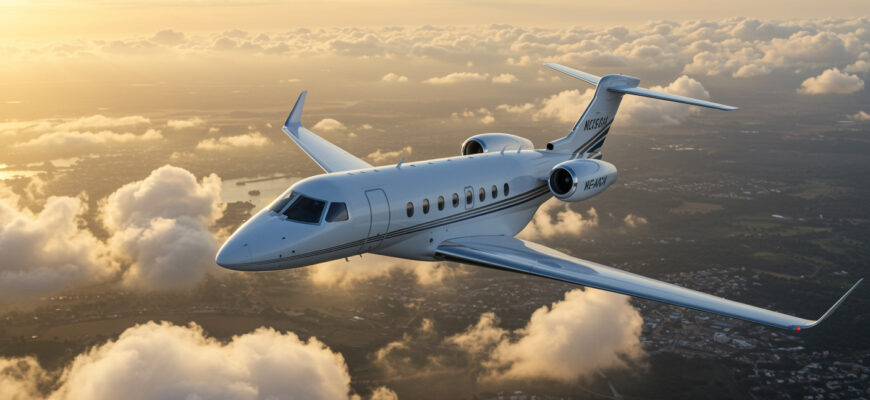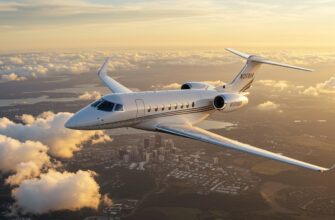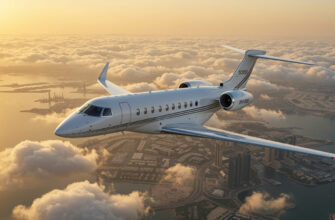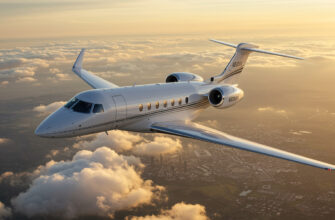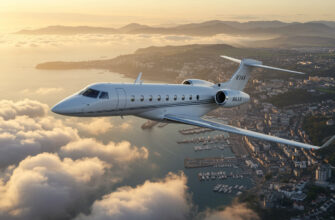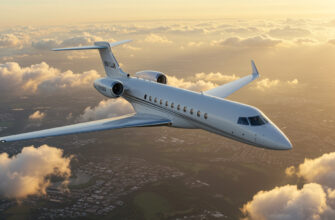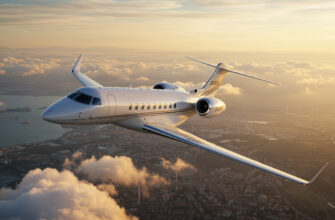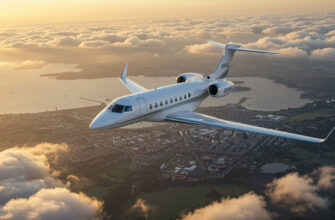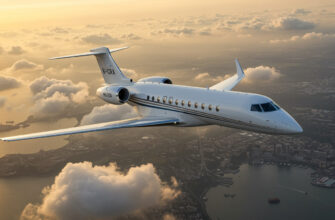Discovering Baracoa as a luxury travel spot is like uncovering a well-kept secret, blending untouched natural beauty with rich Cuban culture. This charming city, nestled on Cuba’s eastern tip, is rapidly stepping into the spotlight for affluent globetrotters wanting something different from the usual Caribbean destinations. While commercial flights serve the region, private jet charters offer an exclusive edge: flexibility, comfort, and privacy that commercial schedules and crowded terminals simply can’t match. For travelers who demand seamless door-to-door experiences — whether arriving for a bespoke getaway or a corporate retreat — private aviation opens doors that traditional Caribbean flights often keep closed.
Baracoa’s unique status as an emerging luxury destination makes private jet charters especially appealing. Imagine skipping hours of layovers and airport lines, touching down closer to luxury villas, remote beaches, or curated excursions deep in the region’s lush landscapes. This level of access is crafted for those who want their travel to be an extension of the trip itself. Plus, private charters allow for personalized scheduling around changing weather patterns or last-minute plans, which are common in the Caribbean’s tropical climate.
Still, this niche market comes with challenges. Baracoa’s relatively small airport limits large jet operations, making runway length and infrastructure critical factors when planning flights. Operators must navigate a maze of Cuban aviation rules, U.S. embargo-related restrictions, and stringent customs procedures — all while balancing client expectations for luxury and discretion. Yet, these hurdles also create opportunities for innovative services, like combining selective routing, bespoke ground handling, and fifth-freedom flight rights to expand range and connectivity. This dynamic is driving a finely tuned market of operators who tailor offerings exclusively for the Baracoa circuit.
Key Airports Serving Baracoa And Infrastructure
Gustavo Rizo Airport (BCA) serves as Baracoa’s primary commercial gateway, equipped mainly to handle small jets and turboprop aircraft. Its runway length, which is on the shorter side, restricts the operation of larger business jets, requiring careful aircraft selection. While the airport supports international arrivals, the available infrastructure remains fairly basic—limited hangar space, modest fuel options, and ground handling services that are still developing. VIP services are growing but don’t yet match the sophistication found at Cuba’s bigger hubs.
For private flights that require more advanced facilities or larger aircraft, Playa Baracoa Airport (often called UPB), situated near Havana, acts as a strategic alternative. Despite the somewhat confusing name, it is frequently used by charters accessing Havana and as a technical refueling or transit stop for flights headed to Baracoa. This airport boasts longer runways, comprehensive fixed-base operator (FBO) amenities, executive lounges, and efficient customs and immigration processes, all of which make it a preferred option for medium-sized jets and some heavier aircraft.
Looking closer at the infrastructure specifics, Gustavo Rizo’s runway length limits options to turboprops and light jets. Fuel availability is standard but tends to be limited to smaller volumes suitable for short-haul flights. Hangar space is scarce, so aircraft typically operate on ramp parking, which can be affected by weather conditions. Conversely, Playa Baracoa offers robust fuel services with multiple types available, larger hangars for overnight stays, and ramp access designed with private aviation in mind.
Ground handling services in Baracoa are evolving quickly to accommodate an uptick in private traffic. While basic, arrangements for VIP passengers include expedited customs clearance and baggage handling. Special requests for luxury ground transport or bespoke catering can be coordinated with local providers, but operators must often plan these aspects well in advance due to limited resources. This contrasts with Playa Baracoa’s well-established service providers, which offer seamless connections, dedicated executive terminals, and quicker turnaround times—features that cater specifically to high-net-worth clients.
Cuba-Specific Operational Logistics And Regulations
Operating a private jet charter in Cuba demands strict adherence to the Cuban civil aviation authority’s regulations. Charter operators must secure appropriate permits for flights involving Cuban airspace and destinations, with compliance checks often more rigorous than in neighboring countries. This regulatory framework ensures aviation safety but can require more extended lead times and additional paperwork, especially for international flights.
One of the most complex aspects involves navigating the U.S. embargo restrictions. Although private flights from the U.S. to Cuba are allowed for certain authorized purposes—which include family visits, educational activities, or humanitarian efforts—these typically require specific licenses and documentation. Charter providers work closely with clients to verify eligibility under these categories and handle all compliance matters, helping to avoid potential legal pitfalls.
Customs and immigration procedures in Baracoa for private aircraft arrivals are uniquely structured. While the airport supports international entries, processing times can be longer and less predictable than in Havana’s main airports. Private charters benefit from VIP channels that expedite clearance, but operators must coordinate arrival times carefully, especially during peak travel periods. Passenger documentation must be thorough, including visas where required, and customs allowances tend to be more generous than commercial flights, accommodating the typical baggage needs of private travelers.
Fifth-freedom rights—those allowing airlines to carry passengers between two foreign countries during flights originating or ending in their home country—add an interesting layer to Baracoa’s charter market. While scheduled fifth-freedom commercial flights to Baracoa are rare, private jets occasionally use these rights for technical stops or route extensions, enhancing connectivity within the Caribbean and beyond. This flexibility can offer clients more exotic routing options and operational efficiencies not commonly available on standard commercial services.
| Feature | Gustavo Rizo Airport (Baracoa) | Playa Baracoa Airport (Havana area) |
|---|---|---|
| Runway Length | Short – limits larger jets | Longer – supports medium to heavy jets |
| Customs & Immigration | Available, slower processing | Full-service, expedited clearance |
| FBO Facilities | Basic | Comprehensive with lounges and services |
| Hangar Space | Limited | Ample |
| Fuel Availability | Standard for small aircraft | Multiple fuel types, larger volume |
- Understand local regulations early — coordinating with experienced charter operators is essential to streamline permits and paperwork.
- Expect runway length to dictate your aircraft choice; smaller turboprops or light jets often provide the best access to Baracoa itself.
- Consider using Playa Baracoa as a technical stop or alternative landing option when operating larger jets.
- Plan ground services and luxury provisions well in advance, especially if arriving at the less-developed Gustavo Rizo Airport.
- Prepare for variable customs and immigration processes—VIP handling is available but requires operational coordination.
Aircraft Options for Baracoa Charter Flights
Flying to Baracoa often raises the question: what type of aircraft fits the bill best? The region’s main airport, Baracoa Airport (BCA), has a shorter runway that naturally favors certain planes over others. Turboprops like the Pilatus PC-12 or King Air 350 make excellent candidates here—they’re designed for short regional hops, offer reliable performance on limited runway lengths, and come with cost-efficiency that smaller groups appreciate. Whether you’re hopping down from Havana or a nearby Caribbean island, turboprops can handle these legs without breaking the bank.
On the other side, light jets such as the Cessna Citation CJ2 and Learjet 75 are faster and can cover slightly longer distances, making them great for hops from Miami, Nassau, or Cancun. They provide comfortable cabins for 4 to 7 passengers and add a touch of speed luxury. However, for those aiming to travel long-haul directly from North America or Europe, midsize and heavy jets like the Challenger 650 or the Gulfstream G550 step in with roomy cabins, advanced amenities, and ample range.
Balancing the benefits and trade-offs is crucial. For instance, while heavy jets deliver the ultimate luxury and can fly nonstop from farther away, Baracoa’s airport runway length and infrastructure sometimes make them impractical. Larger aircraft often need to divert and then shuttle passengers with smaller vehicles or helicopters. Light and midsize jets may face similar restrictions but generally enjoy better access than heavy jets.
Among popular charter models on Caribbean routes to Baracoa, turboprops dominate short regional travels, prized for their entry-level pricing and versatility. Popular mid-size jets include the Citation XLS+ and Embraer Phenom 300, combining range and sleek interiors. For those wanting extra space and amenities, the Gulfstream G650 and Dassault Falcon 7X offer long-range options with connectivity, plush seating, and catering suited for VIP tastes, though operational challenges at Baracoa must be factored in by pilots and planners alike.
Pricing Structures and Factors Influencing Charter Decisions
Curiosity often centers on the actual cost of charters to Baracoa. It’s not just about the hourly rate of the aircraft—multiple layers come into play. Hourly rates vary by aircraft type: turboprops hover around $1,800 to $2,400 per hour, while light jets can command $2,400 to $3,900. Mid and heavy jets, with their extended range and deluxe interiors, start closer to $4,200 and can soar to $17,800 per hour on ultra-long-range flights.
Additional fees come in the form of landing charges, ground handling expenses, and sometimes overnights fees if the aircraft remains stationary overnight. A crucial but often overlooked factor is aircraft positioning—if the plane needs to fly in empty from another city to Baracoa or its departure base, those “deadhead” hours can meaningfully bump up the total cost. Seasonal demand compounds this effect; during peak tourism or event times, prices tend to rise sharply.
Weather can likewise throw curveballs. The hurricane season imposes operational uncertainties that may trigger last-minute schedule changes or require additional buffer time. Political shifts and regulatory updates also impact license requirements and the cost framework, especially given Cuba’s unique environment.
Jet cards and shared charters offer savvy travelers ways to reduce expenses without sacrificing comfort. Jet cards, with prepaid flight hours, lock in rates and provide better budgeting control, but some have Cuba-specific restrictions tied to embargo rules. Sharing a charter leg with others heading to Baracoa reduces per-passenger costs, though privacy takes a hit. Strategic charter planning combined with flexible scheduling is often the best recipe for optimizing dollars while still enjoying enhanced travel luxuries.
Practical Travel Considerations and Challenges
When flying privately to Baracoa, customs and immigration processes deserve close attention. Though the airport offers international clearance, the pace is generally slower than larger Cuban hubs like Havana. Private charters help smooth this with VIP processing channels, but patience is still recommended. Ensuring all travel documentation is in order before arrival avoids unexpected delays.
Baracoa’s weather is a wildcard, influenced by tropical patterns and hurricanes. Flight scheduling frequently accounts for this by building in alternate landing sites such as Santiago de Cuba or Holguin, where passengers might transfer via smaller aircraft to reach their final destination. These backup options preserve itinerary flexibility amid Caribbean storm seasons.
Security protocols for Cuba-bound passengers are typically more stringent than in other Caribbean countries. U.S. travelers especially must comply with embargo-related documentation and valid travel licenses, often backed by specific visit categories like family or educational purposes. Private charter operators assist by guiding clients through regulatory hoops and ensuring compliance.
Jet card usage under embargo constraints is a subtle art. Many standard U.S.-based jet card programs limit or exclude Cuba flights entirely. However, direct broker negotiations or European programs tend to have more flexibility. Tips for seamless compliance include:
- Confirming the charter provider’s knowledge of Cuba-specific licensing
- Retaining copies of all travel permits onboard
- Communicating early with card issuers about intended routes
- Allowing extra time for pre-flight approvals and documentation checks
These practicalities make private charter travel to Baracoa feel less like a puzzle and more like a bespoke adventure—where knowing the rules means flying smart, staying safe, and arriving ready to enjoy Cuba’s untouched magic.
